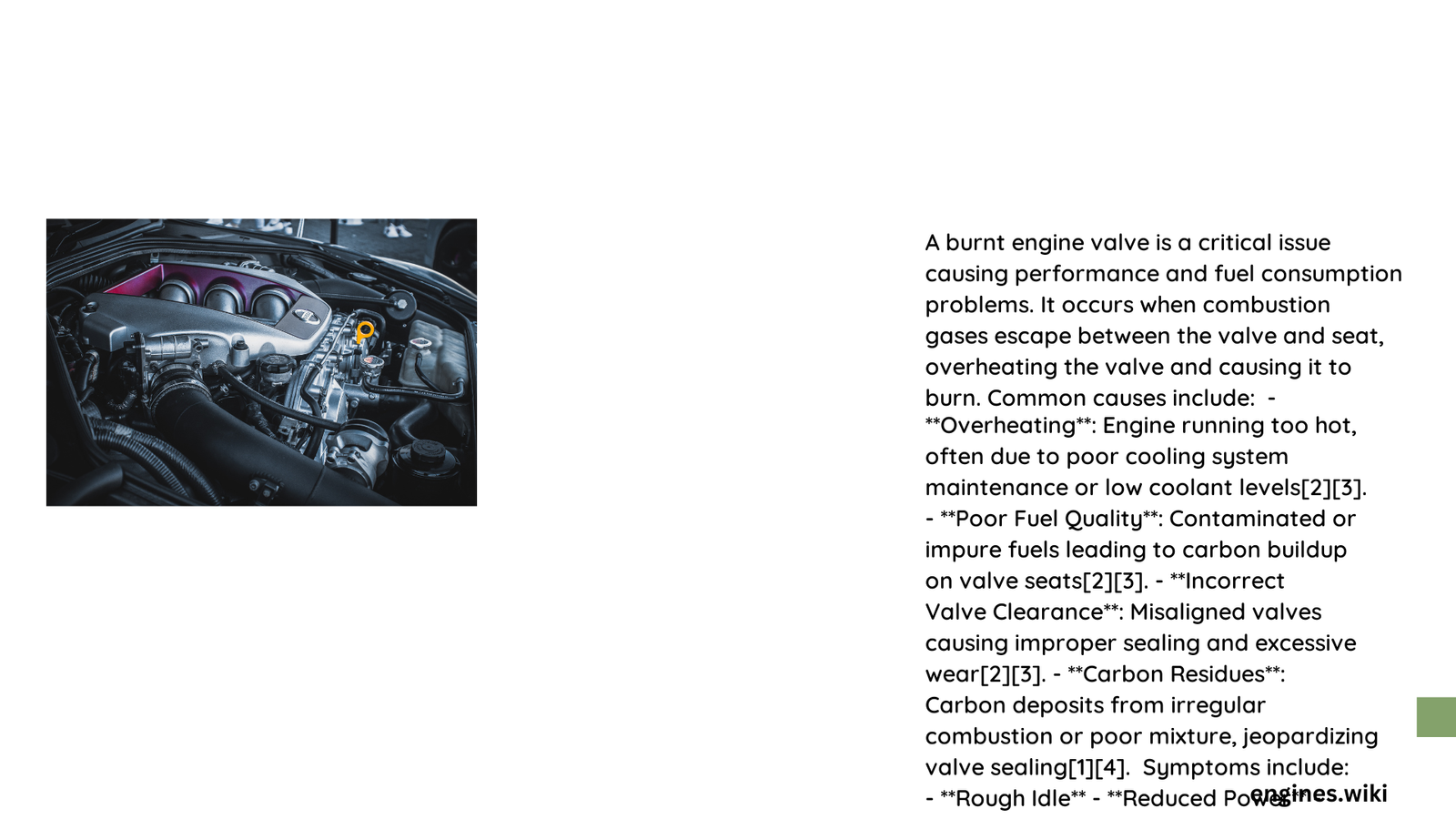A burnt engine valve represents a critical mechanical failure where excessive heat and combustion pressures compromise valve integrity, leading to significant performance degradation. This condition occurs when valve materials deteriorate, causing compression loss, reduced engine efficiency, and potential catastrophic engine damage if left unaddressed. Understanding the intricate symptoms, root causes, and repair strategies is essential for maintaining optimal vehicle performance and preventing expensive mechanical failures.
What Are the Primary Symptoms of a Burnt Engine Valve?
How Can You Detect Compression Loss?
- Compression readings below 100 psi in affected cylinders
- Noticeable engine misfiring during acceleration
- Significant reduction in overall engine performance
- Unstable idle and rough engine operation
What Exhaust Indicators Suggest Valve Damage?
| Symptom | Potential Indication |
|---|---|
| Blue/White Smoke | Valve seal deterioration |
| Hissing Exhaust Sound | Air leakage through valve |
| Increased Tailpipe Emissions | Compromised combustion process |
What Causes Burnt Engine Valves?
Thermal Stress Factors
Burnt engine valves typically result from multiple interconnected factors:
1. Persistent engine overheating
2. Poor cooling system maintenance
3. Inadequate lubrication
4. Low-quality fuel consumption
5. Extreme operating conditions
Material Degradation Mechanisms
- Exhaust valves experience higher thermal stress
- Continuous exposure to extreme temperatures
- Material fatigue and structural weakening
- Metallurgical changes under prolonged heat
How Much Does Burnt Engine Valve Repair Cost?

Comprehensive Cost Breakdown
- Diagnostic Testing: $100 – $300
- Replacement Valves: $200 – $500
- Labor Costs: $500 – $1,500
- Total Estimated Repair: $1,000 – $3,000
What Are Recommended Repair Strategies?
Professional Diagnostic Process
- Perform comprehensive compression test
- Conduct leak-down diagnostic evaluation
- Inspect valve seat and surrounding components
- Determine extent of mechanical damage
- Select appropriate repair or replacement strategy
Essential Repair Tools
- Compression test kit
- Valve spring compressor
- Piston ring compressor
- Precision measurement tools
- High-quality replacement valves
How Can You Prevent Burnt Engine Valves?
Proactive Maintenance Techniques
- Regular cooling system inspections
- Maintain proper coolant levels
- Use high-quality engine oil
- Monitor engine temperature consistently
- Address minor performance issues promptly
Recommended Maintenance Schedule
| Interval | Action |
|---|---|
| Every 3,000 miles | Comprehensive engine inspection |
| Annually | Cooling system flush |
| During oil changes | Check valve train components |
Expert Recommendations
Critical Prevention Strategies
- Avoid prolonged high-temperature operations
- Use manufacturer-recommended fuel grades
- Implement consistent maintenance routines
- Address warning signs immediately
Professional Insights
Experienced mechanics emphasize that early detection and proactive maintenance significantly reduce the likelihood of burnt engine valve complications. Regular diagnostic checks and understanding your vehicle’s specific performance characteristics are crucial preventive measures.
Conclusion
Burnt engine valves represent a complex mechanical challenge requiring systematic diagnostic approach, technical expertise, and timely intervention. Vehicle owners must remain vigilant, prioritize regular maintenance, and respond quickly to potential warning signs.
